NOTE: An archive of the Musings of an Iraqi Brasenostril on Jihad column can be found here.
–
Muhajireen Battalions in Syria
By Aymenn Jawad Al-Tamimi
When it comes to discussing the dynamics of Sunni global jihadism in Syria, the tendency is to characterize Jabhat al-Nusra as the battalion for native Syrian fighters and the Islamic State of Iraq and ash-Sham [ISIS] as a group of primarily foreign fighters. This analysis is somewhat simplistic- as I have argued elsewhere- but it is true that the majority of Sunni muhajireen who have come into Syria have congregated under the banner of ISIS. However, there are also a number of other battalions under which muhajireen have congregated. Here I will explore the nature of these groups and what links, if any, they have with ISIS/Jabhat al-Nusra.
Jaysh al-Muhajireen wa al-Ansar [JMWA]

Figure 1: One of the emblems used by JMWA
JMWA was originally under the leadership of Omar ash-Shishani, who, as media reports have recently documented, was a veteran of the Georgian army. In May, Omar was appointed northern amir of ISIS by Sheikh Abu Bakr al-Baghdadi, encompassing Aleppo, Raqqa, northern Idlib and Latakia governorates. Following this appointment, JMWA came to be a mere front-group for ISIS, with Omar ash-Shishani identified as “leader of the northern region for the Islamic State of Iraq and ash-Sham” in multiple jihadi postings, such as this August news release from Kavkaz Center.
It might be asked what gain there is to have a front-group operating under a different name. The answer is that it can create the impression of a larger unified ideological front than what actually exists. One should compare with the Iranian proxy militias who operate under multiple banners but are normally just mirror fronts of one another. The approach can be very effective as an agitprop strategy: note for instance how the New York Times reported on the fall of Mannagh as though JMWA was a separate faction from ISIS.
There are multiple strands of evidence for JMWA as a front-group for ISIS during Shishani’s leadership. On jihadi forums and among other rebels, JMWA is identified as synonymous with ISIS during the time of Shishani’s leadership, as illustrated below.

Figure 2: JMWA-released graphic identifying the group as synonymous with ISIS and showing Qur’an memorization study circles in the Idlib village of Salwa.

Figure 3: A photo from the same series showing the teaching of Qur’an memorization to children in Salwa.
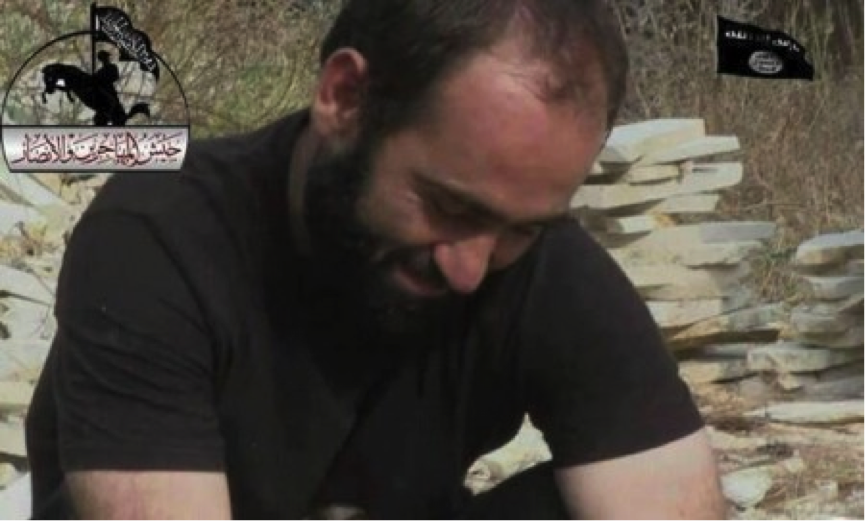
Figure 4: Abdullah ash-Shishani: a martyr claimed for JMWA/ISIS during the mujahideen offensive on Alawite areas of Latakia in the summer.
From the testimony of other rebels, we have video put out by Liwa al-Fatah from the capture of Mannagh airbase in Aleppo governorate at the beginning of August, in which JMWA/ISIS played the leading role in bringing about the regime stronghold’s final fall. In this video, the Liwa al-Fatah speaker identifies one Abu Jandal al-Masri (an Egyptian fighter) as a member of JMWA, equated with ISIS. Abu Jandal was the leading JMWA/ISIS operative behind the capture of Mannagh airbase. Abu Jandal vows that the mujahideen will not leave a single Alawite alive in Syria.

Figure 5: Liwa al-Fatah video in which JMWA and ISIS are identified as synonymous. The JWMA logo is included to emphasize friendship between the JMWA and Liwa al-Fatah.
However, a split subsequently emerged towards the end of November whereby those wishing to remain loyal to Omar ash-Shishani declared sole affiliation with ISIS, while those wishing to retain the JMWA label have now asserted independence and appointed a new commander: Salah ad-Din ash-Shishani. Below is a copy of the official JMWA statement detailing the statement.

Figure 6: JMWA statement detailing the split with ISIS.
“JMWA was among the first of the armies fighting in Bilad ash-Sham…and Omar ash-Shishani- may God preserve him- was the previous commander for this army; and he has pledged allegiance with half of the army to the Islamic State of Iraq and ash-Sham, so the Majlis Shura of JMWA held a meeting and decided on the appointment of Salah ad-Din ash-Shishani as the commander for this army. We ask God- Almighty is He- for success and fortune for all who fight so that God’s word may be supreme.”
One should also note that this declaration of independence is reflected in the social media circles, as JMWA pages no longer attach their own label to actions carried out by ISIS. Indeed, an “official” Facebook page for JMWA was featuring with a JMWA label images of ISIS’ execution of Hasan Jazra and other members of Ghuraba ash-Sham in the Aleppo town of Atarib, only for that page to be deleted overnight after the announcement of JMWA’s new independence and for all subsequent images of ISIS activity put out with no JMWA label on a new Facebook page.
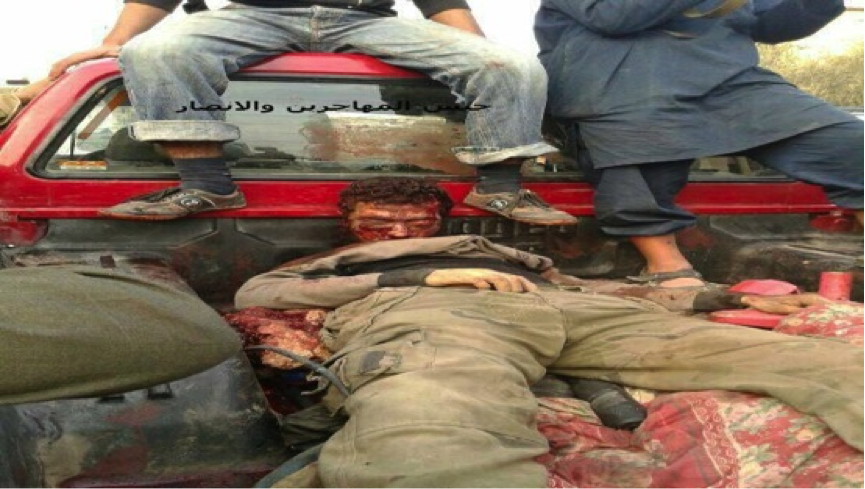
Figure 7: Photo from Atarib showing corpses of Ghuraba ash-Sham members executed by ISIS. Note the JMWA label, which is no longer being used by JMWA media output in documenting ISIS activities.
Thus, while JMWA and ISIS continue to share a similar ideology, a personal split has led to JMWA’s separation from ISIS. Omar ash-Shishani and the previous Shari’a judge for JMWA who joined Omar in declaring sole affiliation with ISIS also released a statement of their own indicating that those of the Caucasian and Ukrainian mujahideen who did not pledge allegiance (bay’ah) to ISIS refused because of their prior connection through bay’ah to Sheikh Abu Othman Duka, the Caucasus Emirate amir, together with a detachment of Arab fighters from “Jamaat al-Takhfeekh.” However, it should be noted that Omar ash-Shishani also claims support from the Caucasus Emirate amir for the bay’ah to Sheikh Baghdadi in an interview with a Russian mujahideen site.
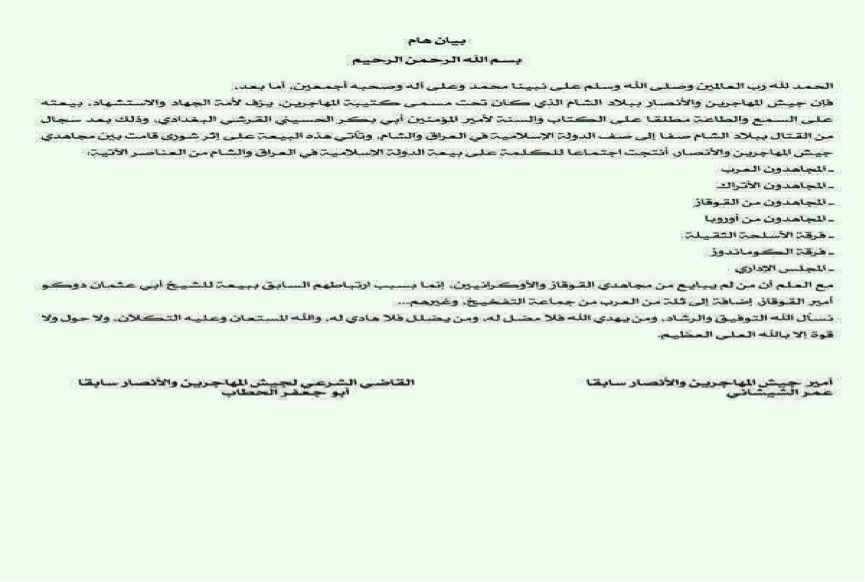
Figure 8: Statement from Omar ash-Shishani and the former Shari’a judge of JMWA clarifying reasons for the split within the organization.
Jamaat Jund ash-Sham
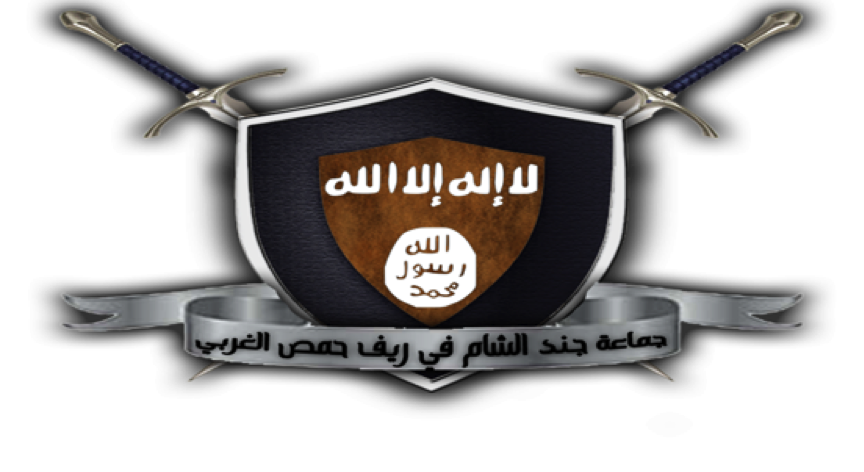
Figure 9: Emblem of Jamaat Jund ash-Sham.
A battalion based in rural western Homs governorate, it was founded by Lebanese fighters and now consists of a mixture of Syrian and Lebanese fighters. Its ideological affinity with ISIS is illustrated in its emblem shown above. Further, the group’s Facebook page features the ISIS flag to indicate its ideological affiliation. In any event, an interview with via Twitter confirmed to me that the group supports a Caliphate and its ‘aqīda’ (“creed”) is the same as that of ISIS, though the evidence indicates it is not identifying itself as a mere front group for ISIS. Further, the group is not hostile to Jabhat al-Nusra, and has circulated images of Jabhat al-Nusra banners in support of the jihad in Syria.

Figure 10: The battalion’s Facebook page. Note the iSIS banner to the right.
One should note that pro-ISIS Lebanese activist pages in Tripoli (subsequently deleted) regularly circulated media output from Jund ash-Sham, suggesting logical links between the Lebanese component of Jund ash-Sham and the Sunni population of Tripoli. Below is a selection of media output featuring the group’s activities and some claimed martyrs.
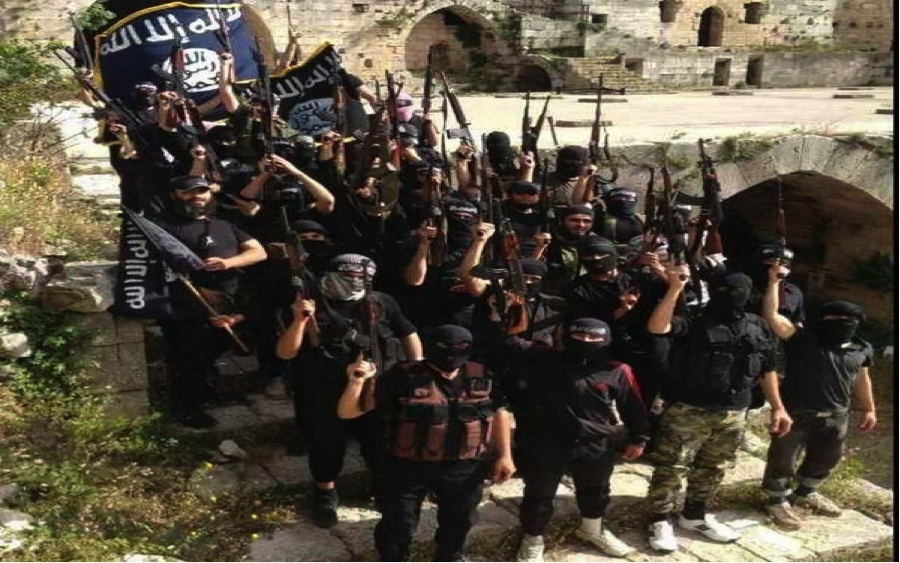
Figure 11: Jund ash-Sham fighters amid ruins in western Homs countryside. Note the ISIS banners.
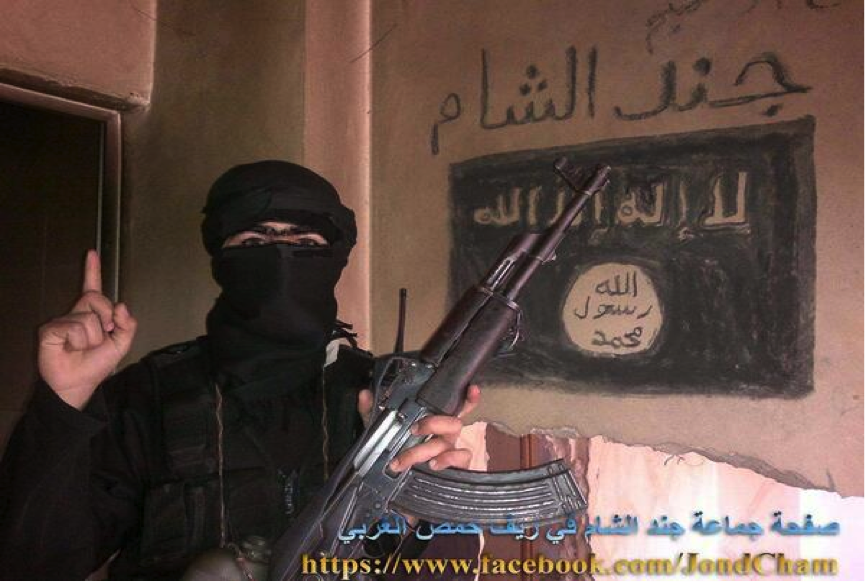
Figure 12: Jund ash-Sham fighter does the Finger of Tawheed pose.
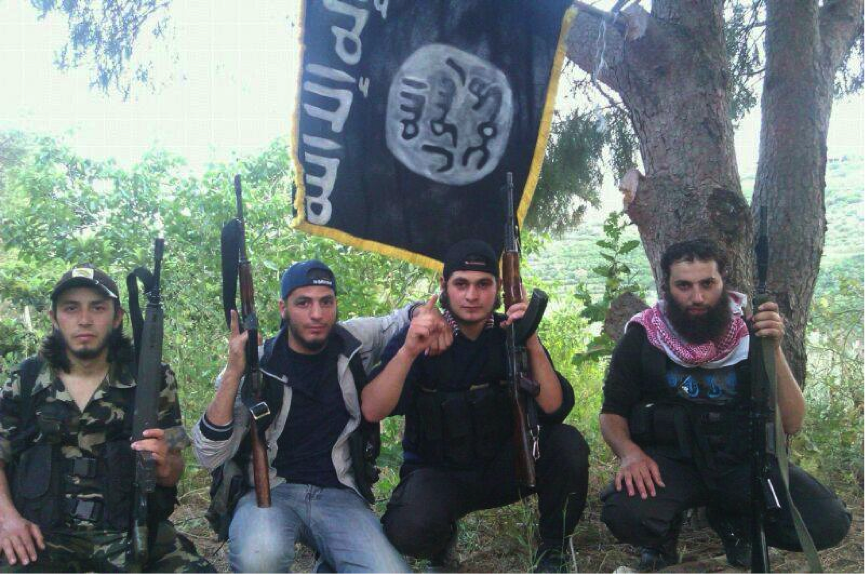
Figure 13: Jund ash-Sham fighters in the Homs countryside.

Figure 14: Abu Zaharā al-Ansari, a martyr for Jund ash-Sham whose death was announced on 1 October.

Figure 15: Abu Khalil al-Ansari, whose martyrdom was announced on 4 December.
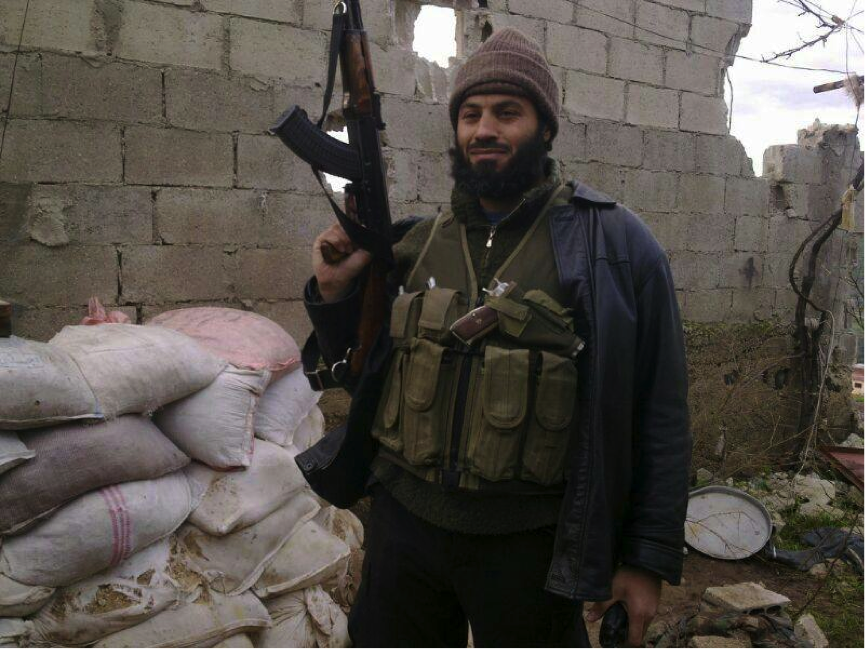
Figure 16: Abu Abd al-Raheem, the deceased commander of Jund ash-Sham.
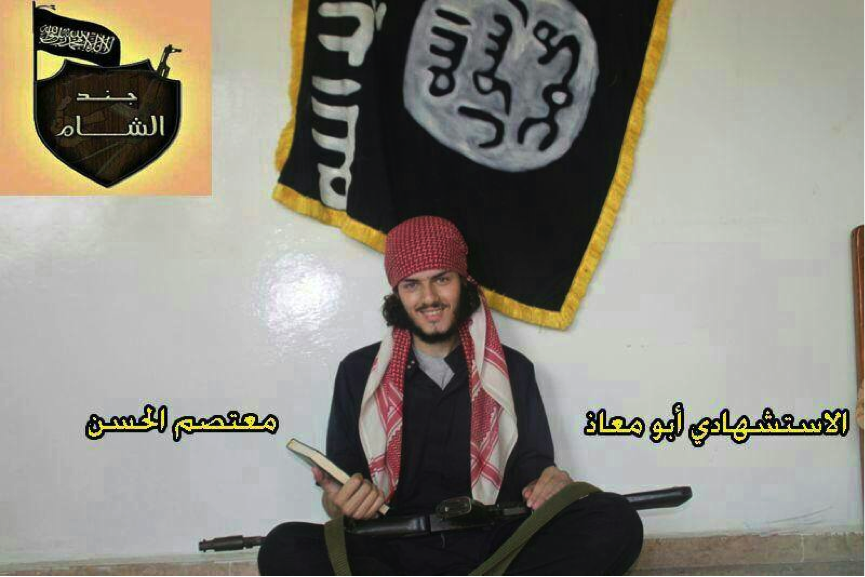
Figure 17: Abu Muadh, another martyr for Jund ash-Sham.
The Green Battalion
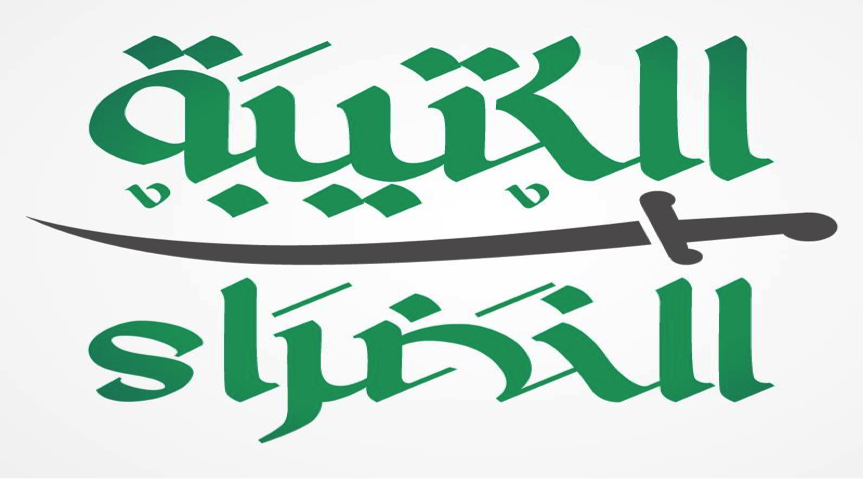
Figure 18: The current logo of the Green Battalion.
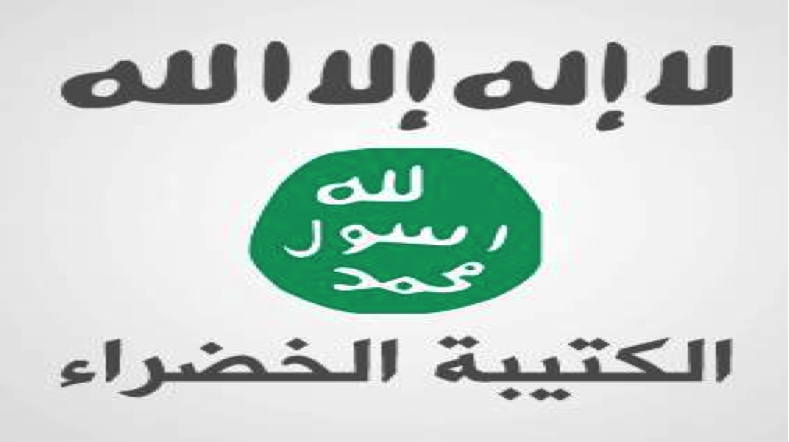
Figure 19: First logo of the Green Battalion, bearing affinity with ISIS.
A battalion that first emerged in August, the group shares an ideological affinity with both ISIS and Jabhat al-Nusra, but is in fact independent: something the battalion wished to emphasize in changing its emblem in mid-September. Led by Saudi muhajireen but also having a native Syrian component, the group’s independence from ISIS and Jabhat al-Nusra is rooted in personal problems.
However, the Green Battalion has conducted joint operations with the two factions in the Qalamoun area of Damascus province and- as part of a wider front including prominent factions like Jaysh al-Islam- in the recent offensive on regime-held zones of the desert areas of Homs governorate (e.g. the localities of Sakhna and Muhin, deemed part of “Wilayat al-Badiya”- “the desert province”- in ISIS discourse), where the Green Battalion claimed to have seized a number of different types of weapons from regime forces. Of recent relevance in this context is the joint operation with ISIS that captured the Qalamoun town of Deir Attiyeh (subsequently renamed Dar Ata’ by ISIS in light of the former name’s Christian connotations) from regime forces, only to see the locality reclaimed by the Syrian army in coordination with Shi’a militias.
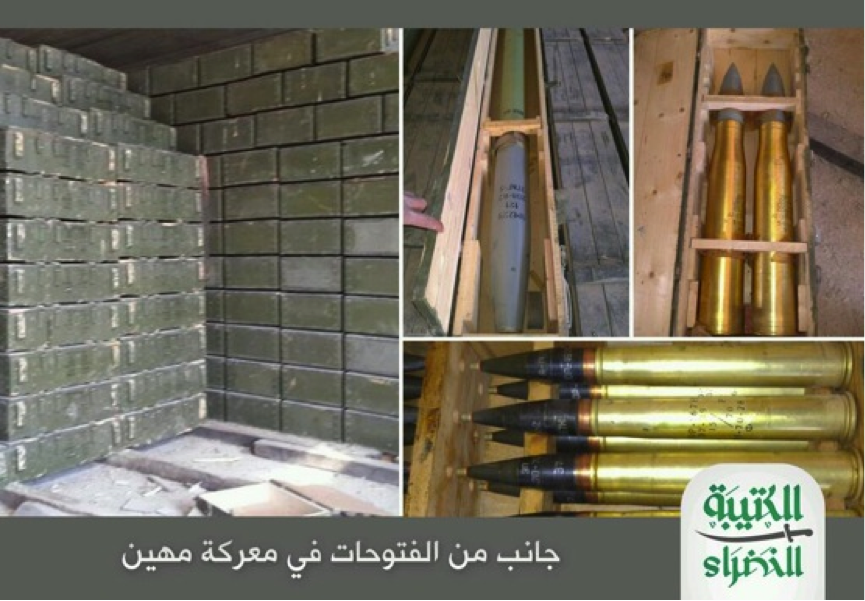
Figure 20: Armaments seized in mid-November by the Green Battalion in Muhin, Homs governorate.
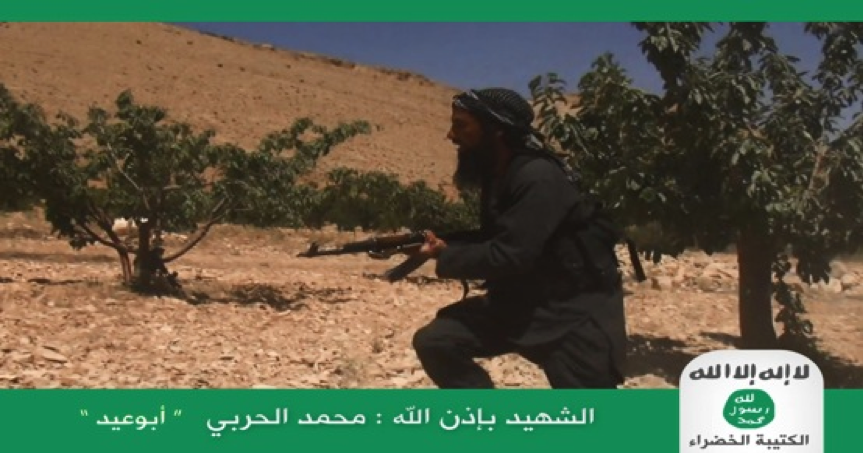
Figure 21: Mohammed al-Harbi- Abu Eid: a Green Battalion commander who was killed during the group’s offensive in early August on the weapons depots of Dahna in Qalamoun.
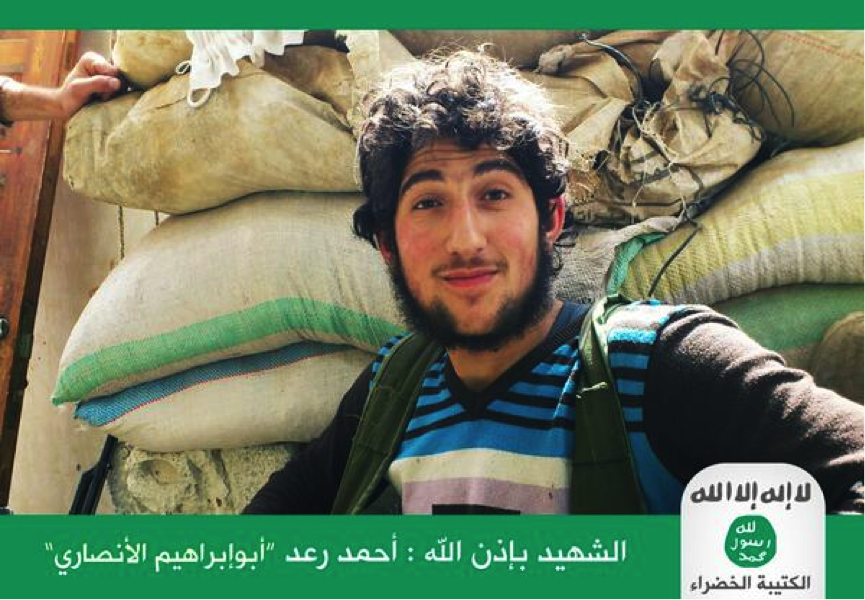
Figure 22: Ahmad Raed- Abu Ibrahim al-Ansari- a native Syrian fighter for the Green Battalion killed in the same place as Mohammed al-Harbi.
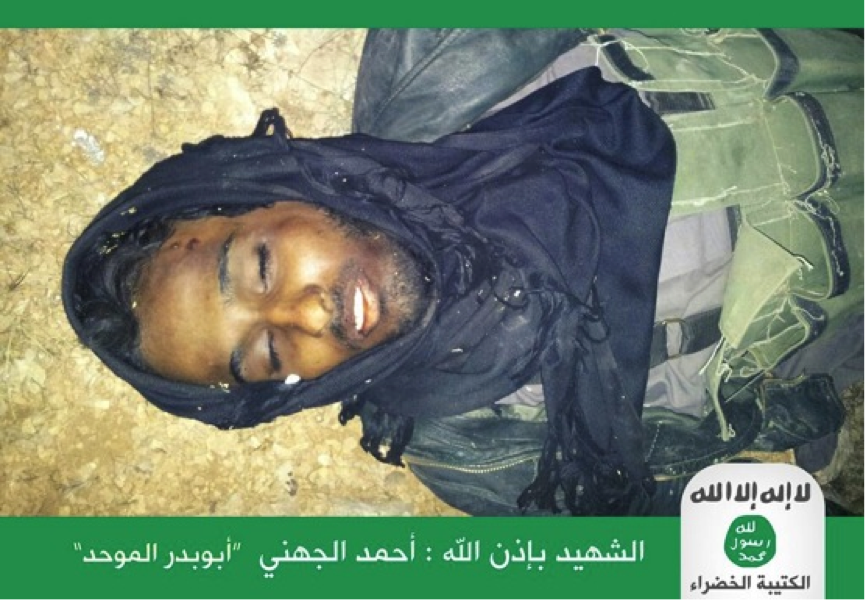
Figure 23: Ahmad al-Jahani- Abu Badr al-Muwahhid- a Saudi martyr for the Green Battalion killed in late August in fighting in the Qalamoun area.
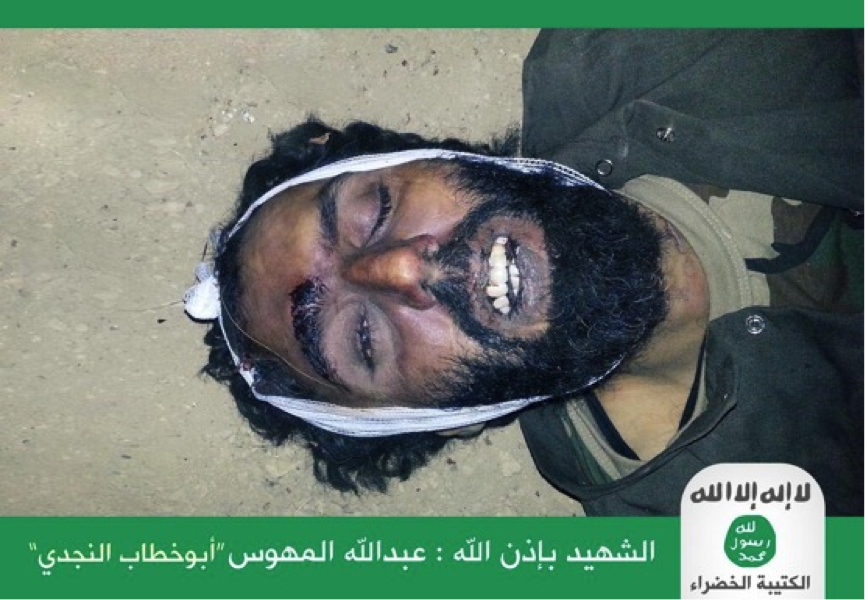
Figure 24: Abdullah al-Mahoos- Abu Khattab al-Najadi- a Saudi martyr for the Green Battalion killed in late September in fighting in the Qalamoun area.

Figure 25: Ahmad al-Bariki, a Khaleeji martyr and military official for the Green Battalion who died in the local hospital in Deir Attiyeh in late November.
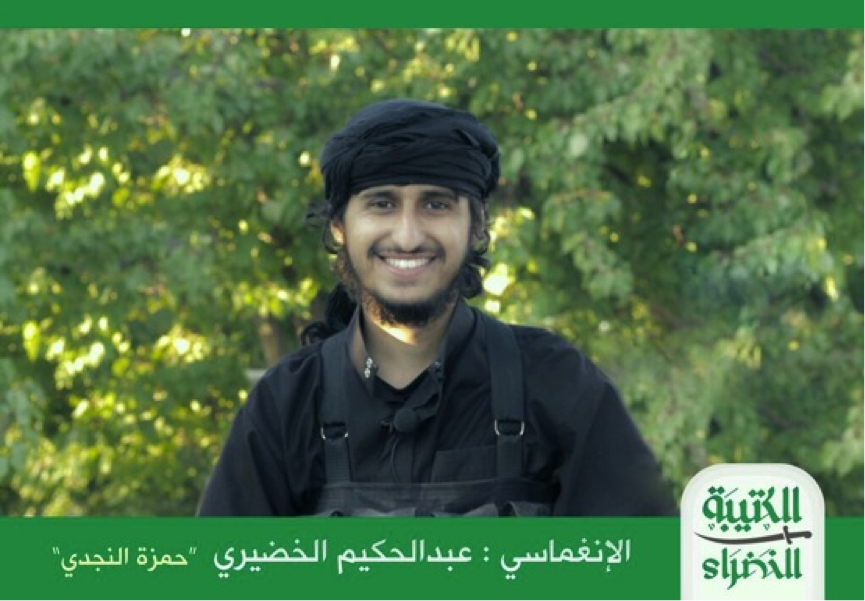
Figure 26: Abd al-Hakeem al-Hadiri- “Hamza al-Najadi”- a Saudi martyr also killed in Deir Attiyeh.
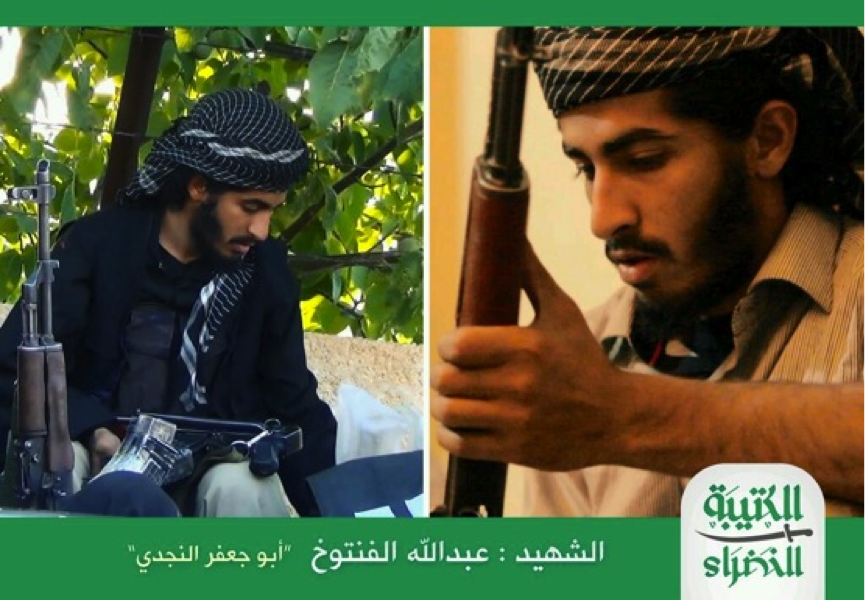
Figure 27: Abdullah al-Fantukh- Abu Ja’far al-Najadi- a Saudi martyr killed in Deir Attiyeh.
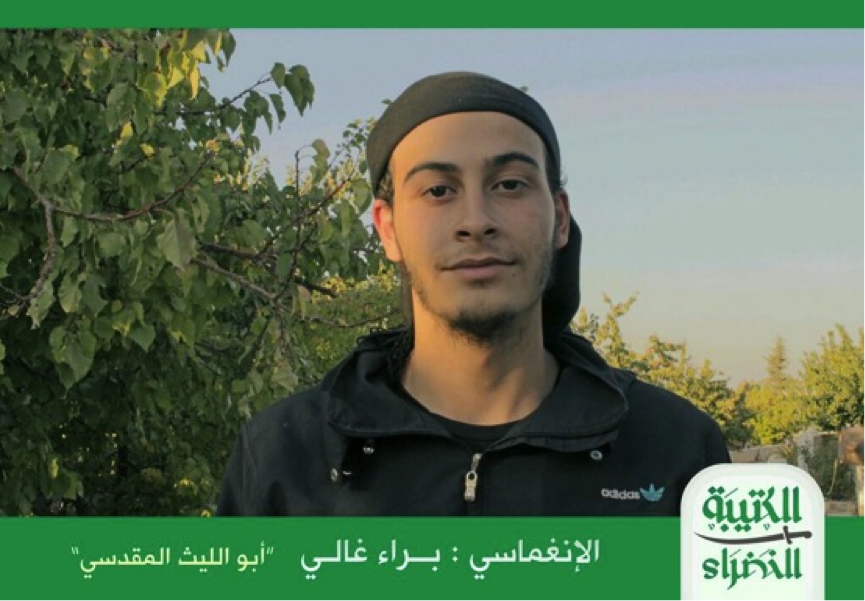
Figure 28: Abu al-Laith al-Maqdisi, killed in Deir Attiyeh.
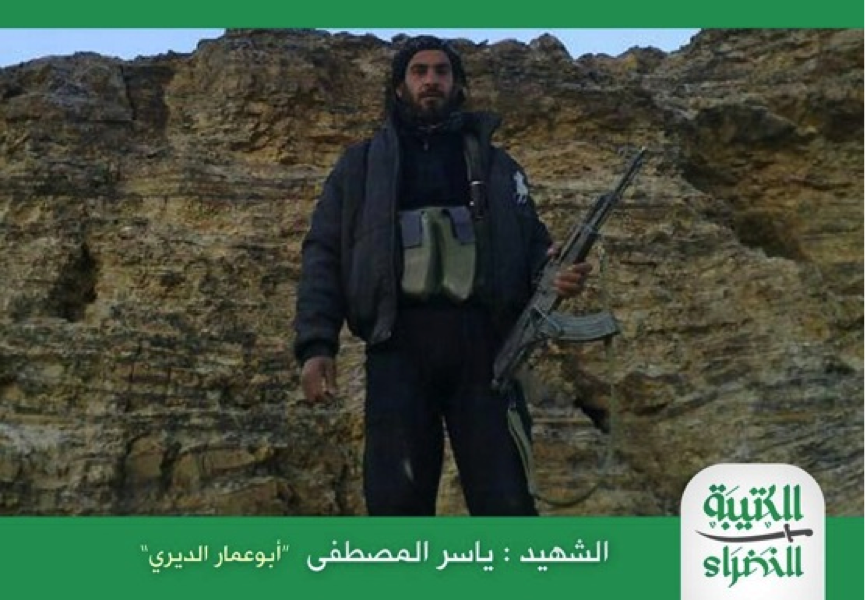
Figure 29: Yasir al-Mustafa- Abu Ammar al-Diri- killed during the Syrian army’s offensive on Deir Attiyeh.
Like ISIS, the Green Battalion has been keen to demonstrate outreach to locals and implementation of Islamic law.
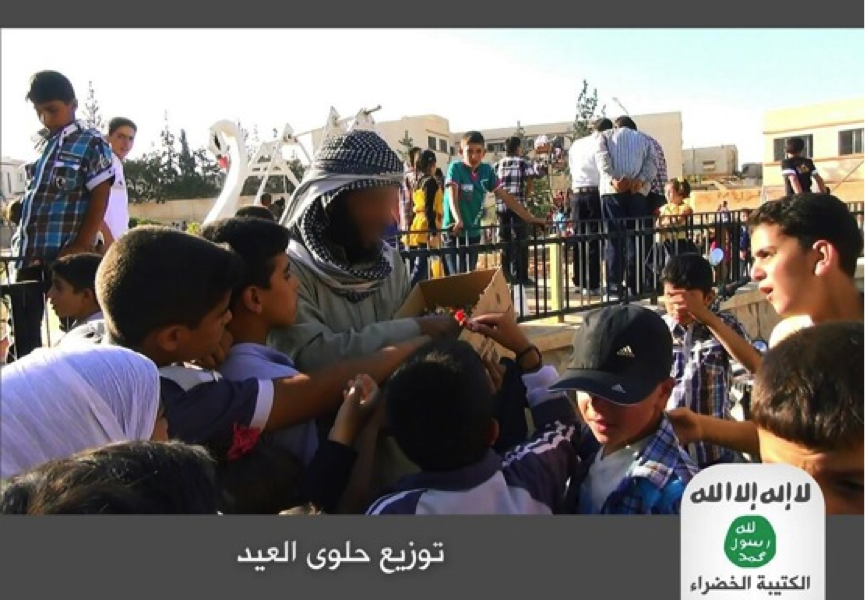
Figure 30: Green Battalion provides sweets to children in Qalamoun on Eid al-Fiṭr.
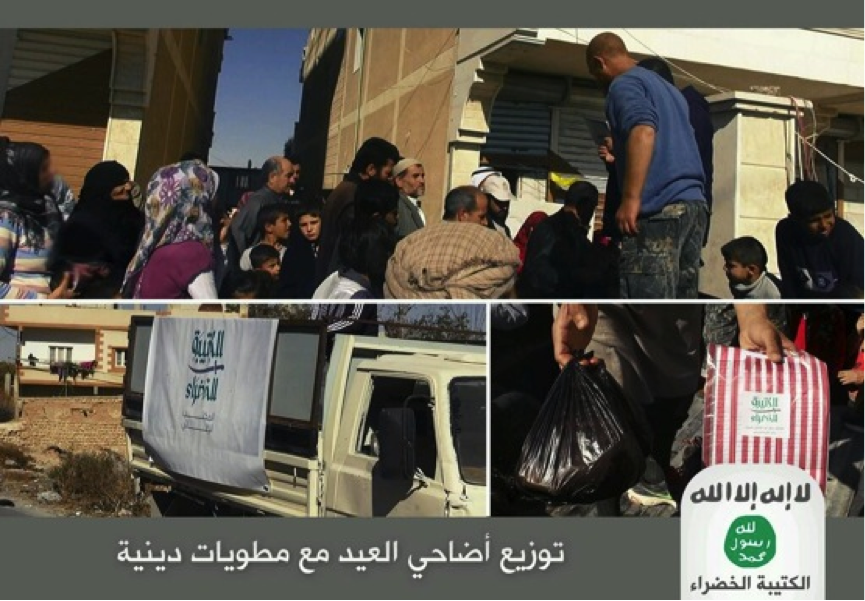
Figure 31: Green Battalion provides meat as food aid for locals in a number of Qalamoun towns for Eid al-Adha.
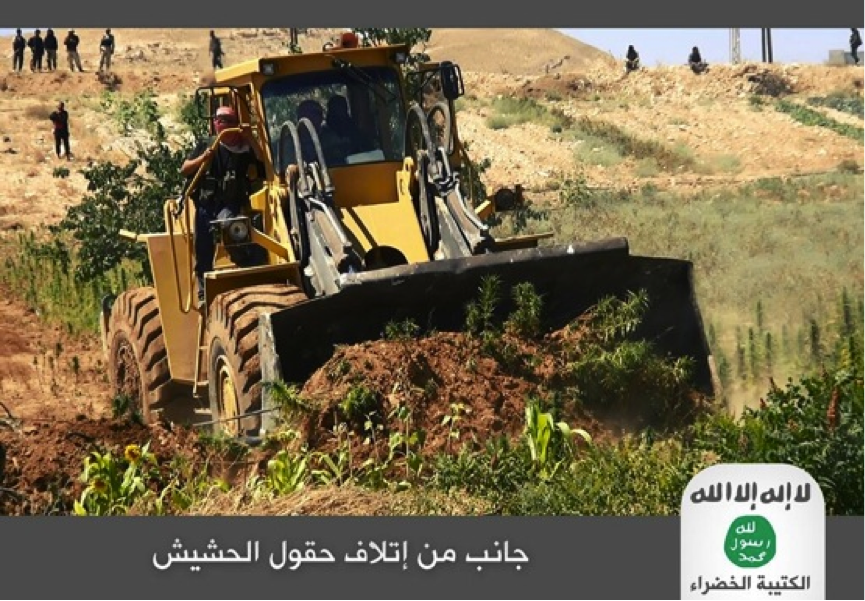
Figure 32: In cooperation with a number of “Islamic battalions” (likely including Jabhat al-Nusra and ISIS), Green Battalion clears out fields of hashish crop in Yabroud area, Damascus province.
Harakat Sham al-Islam
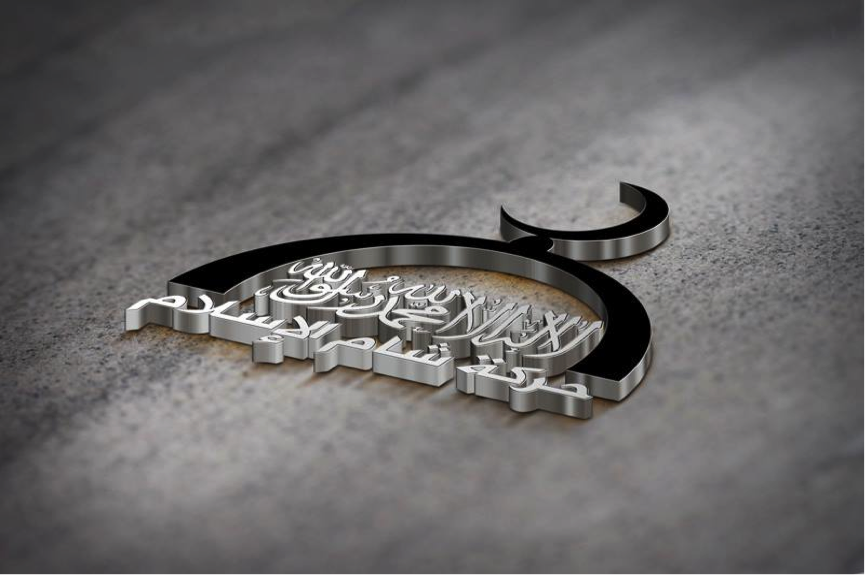
Figure 33: Logo of Harakat Sham al-Islam
A group founded and led by Moroccan-muhajireen, Harakat Sham al-Islam, which first announced its existence in mid-August, participated in the Latakia offensive in the summer and has also cooperated with Jabhat al-Nusra in operations in Aleppo governorate, including a mid-October offensive on Aleppo central prison, in which ISIS did not participate.
During the Latakia offensive, the group lost an ex-Guantánamo detainee of Moroccan origin- Mohammed al-‘Alami, using the name Abu Hamza al-Maghrebi. The group also has the former Guantánamo detainee and prominent al-Qa’ida veteran Ibrahim bin Shakaran as its leader, who is known in Syria as Abu Ahmad al-Muhajir and delivered the funeral eulogy for al-‘Alami (see this article of mine for more information).
While Harakat Sham al-Islam is at first sight independent, it clearly has much closer affinity with Jabhat al-Nusra (which has increasingly adopted the name ‘Tanzim al-Qa’ida fi Bilad ash-Sham’ to signify loyalty to Sheikh Aymenn al-Zawahiri) than ISIS on account of the long-standing, traditional al-Qa’ida central links of Abu Ahmad al-Muhajir.
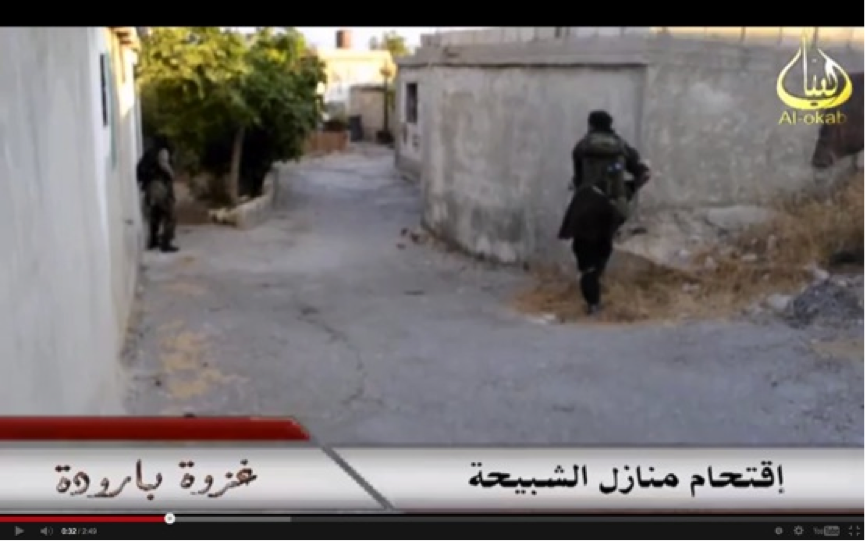
Figure 34: As part of the Latakia offensive, Harakat Sham al-Islam’s “assault on homes of the shabiha” in the Alawite village of Baruda.
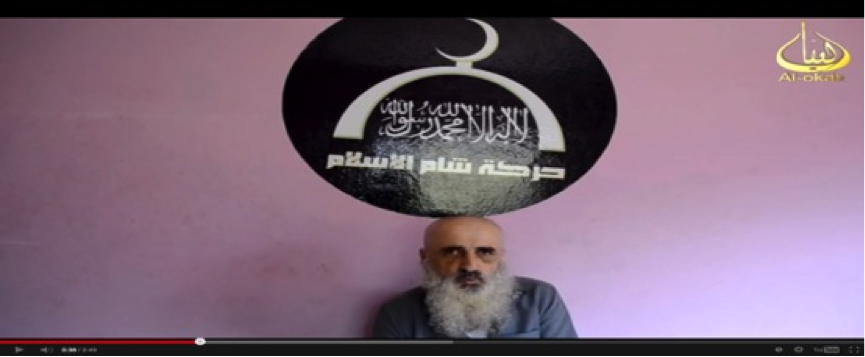
Figure 35: Alawite Sheikh Muwaffaq al-Ghazal, affiliated with the Muqawama Suriya, captured by Harakat Sham al-Islam, and executed by Jabhat al-Nusra.
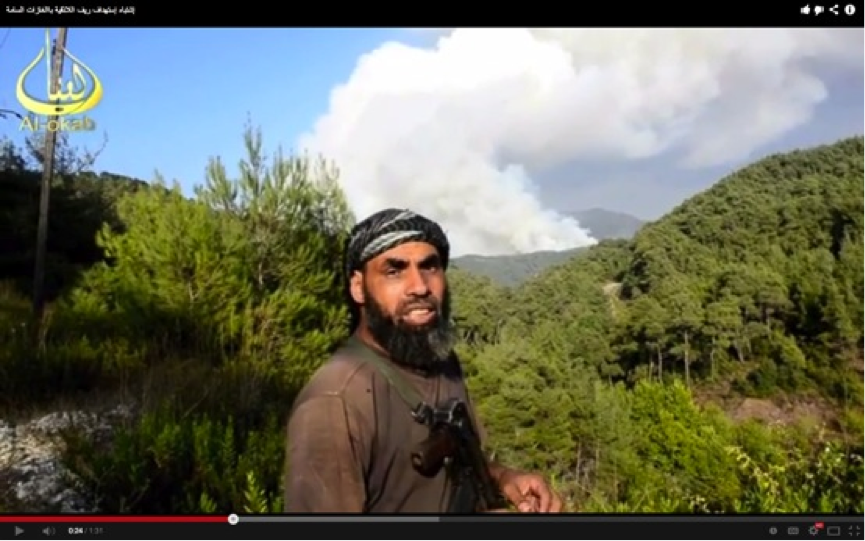
Figure 36: A mujahid for Harakat Sham al-Islam observes smoke arising over the forested mountains of Latakia and suspects a poison gas attack by regime forces.
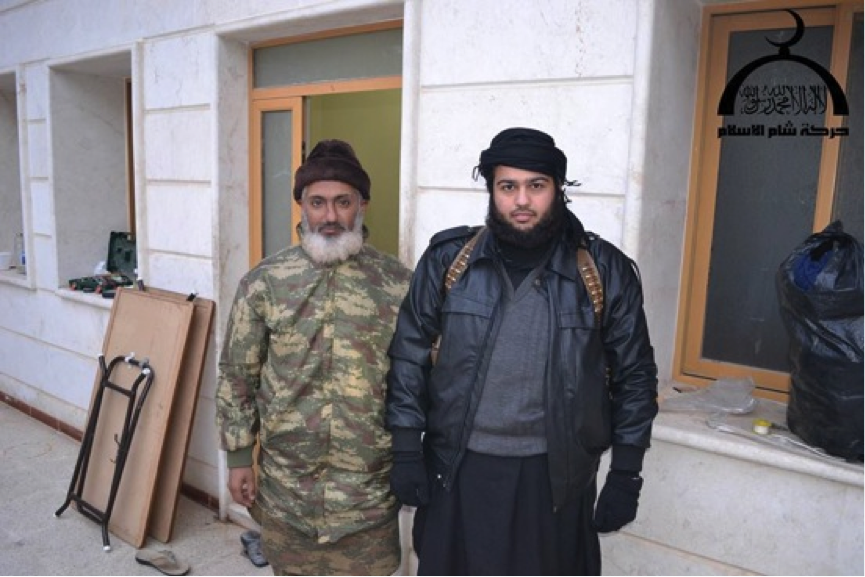
Figure 37: Sheikh Abdullah al-Moheiseni (right, who made hijra to Bilad ash-Sham to fight jihad) meets with leader of Harakat Sham al-Islam Abu Ahmad al-Muhajir (aka Ibrahim bin Shakaran)
In the formation announcement, Abu Ahmad reiterated standard mujahideen discourse on the need to aid the Muslims of Syria, the problems facing the Muslim world at the hands of “Zionist-Masonic” forces and “the traitorous collaborators, who have put their lives in the service of the enemies of the religion and the Ummah.”
One source- namely, the testimony of a muhajir who fought in Latakia- suggests that the purpose of Harakat Sham al-Islam is not primarily to contribute to the effort of establishing an Islamic state in Bilad ash-Sham as the beginnings of a Khilafa, but rather to use Syria as a training ground to return to the Maghreb at some point and wage jihad against the Moroccan regime.
Like ISIS and the Green Battalion, Harakat Sham al-Islam also makes a show of outreach to locals. The group also has its selection of martyrs, some of whom are not from the Maghreb.
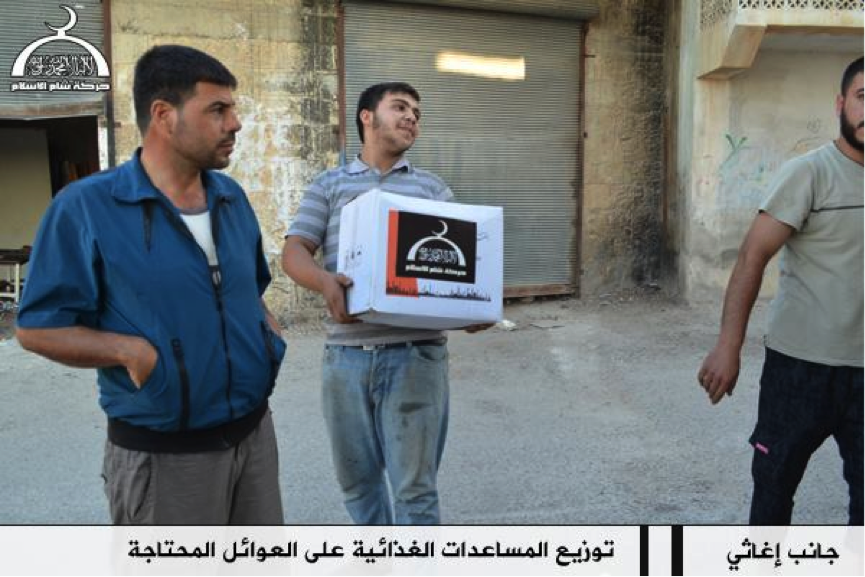
Figure 38: Harakat Sham al-Islam provides food aid for those in need in the Latakia village of Kafr Najah.
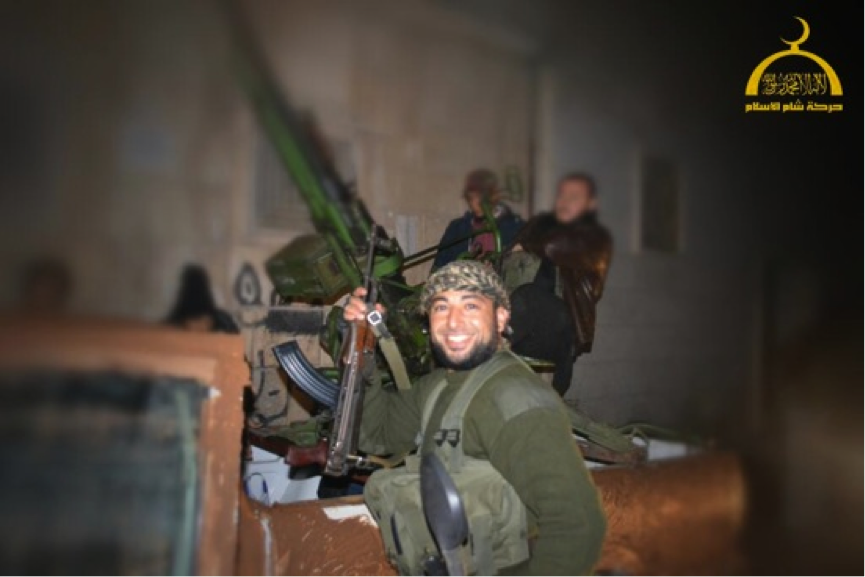
Figure 39: Abu Imran Ibrahim ad-Darwi al-Maghrebi, a Moroccan fighter for Harakat Sham al-Islam who died during a recent assault on al-Kindi hospital in rural Aleppo governorate.
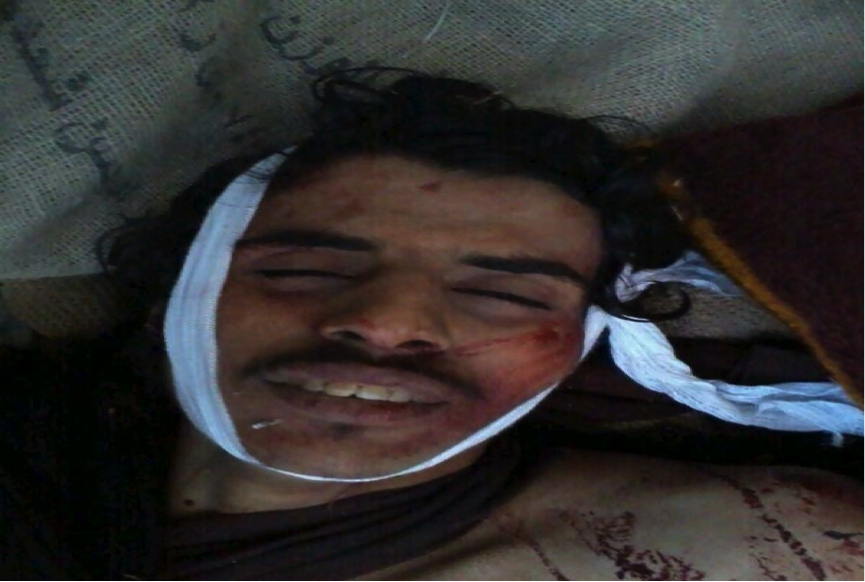
Figure 40: Abu Faysal al-Kuwaiti, killed in late November in rural Aleppo province.
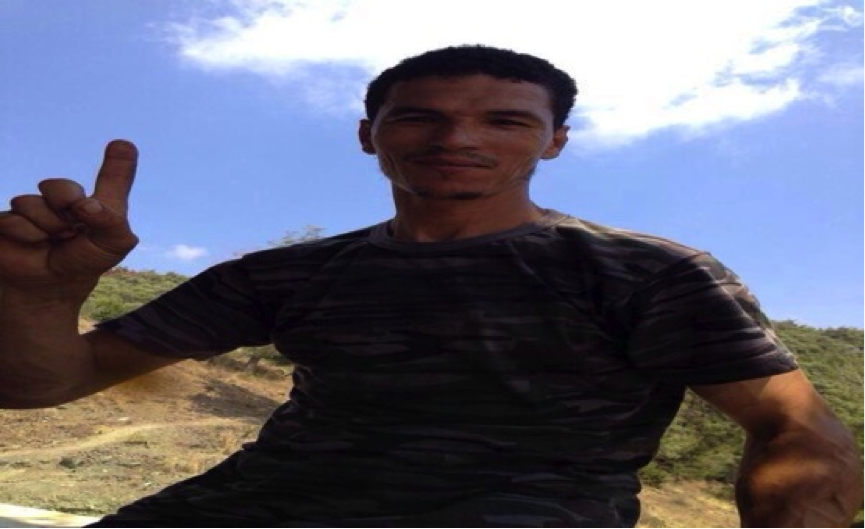
Figure 41: Abu Imran al-Maghrebi, killed in late October during the offensive on Aleppo central prison.
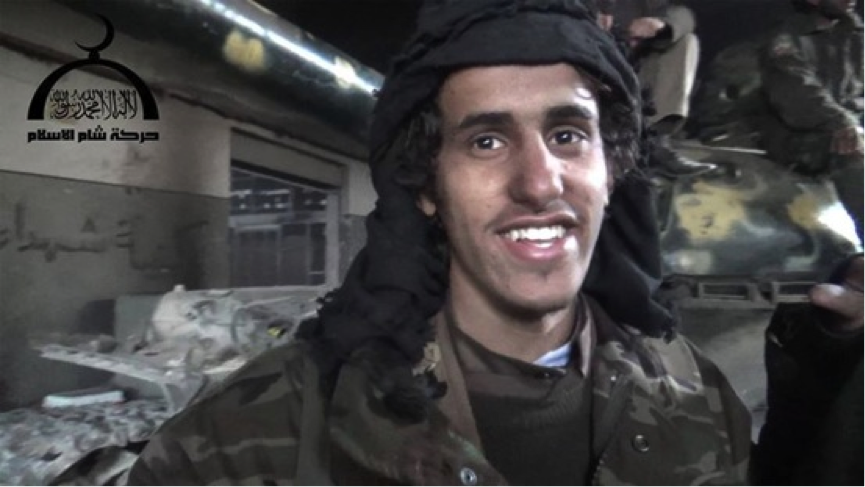
Figure 42: Abu Dera al-Qatari, a Qatari martyr for Harakat Sham al-Islam killed in assault on al-Kindi hospital in rural Aleppo governorate this month.
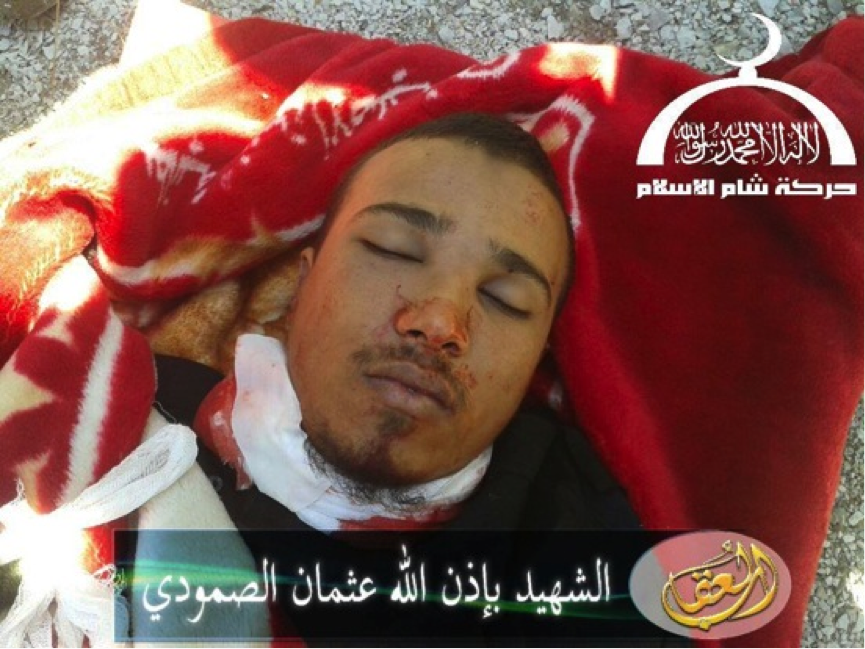
Figure 43: Othman al-Samudi, a Moroccan martyr for Harakat Sham al-Islam killed in rural Latakia.
Suqur al-Izz
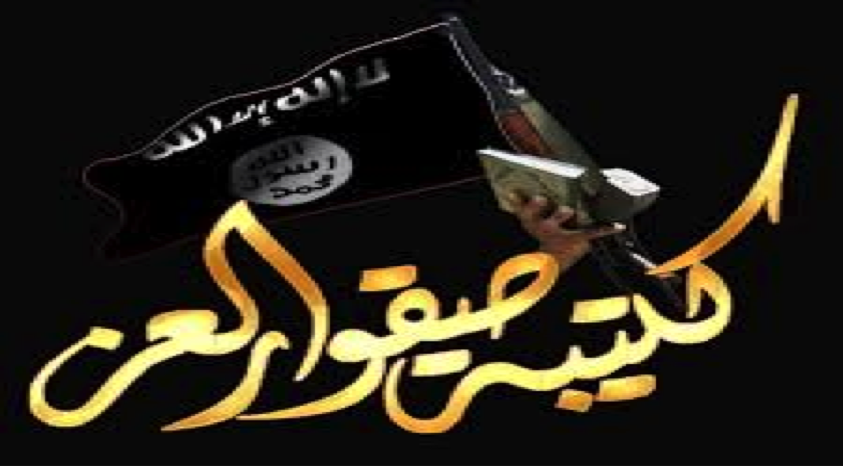
Figure 44: Logo of Suqur al-Izz.
Like the Green Battalion, Suqur al-Izz was founded and is led as an independent formation by Saudi muhajireen, who have had some personal problems with both Jabhat al-Nusra and ISIS, the use of the same banner as that of ISIS in its logo notwithstanding. In fact, the group’s leader emphasizes Suqur al-Izz’s independence by describing it explicitly as an “independent” battalion. However, it does not follow that Suqur al-Izz’s leadership is hostile to either of these two groups. Note for example the words of affection Suqur al-Izz’s leader has for one ISIS fighter Dr. Abdullah.
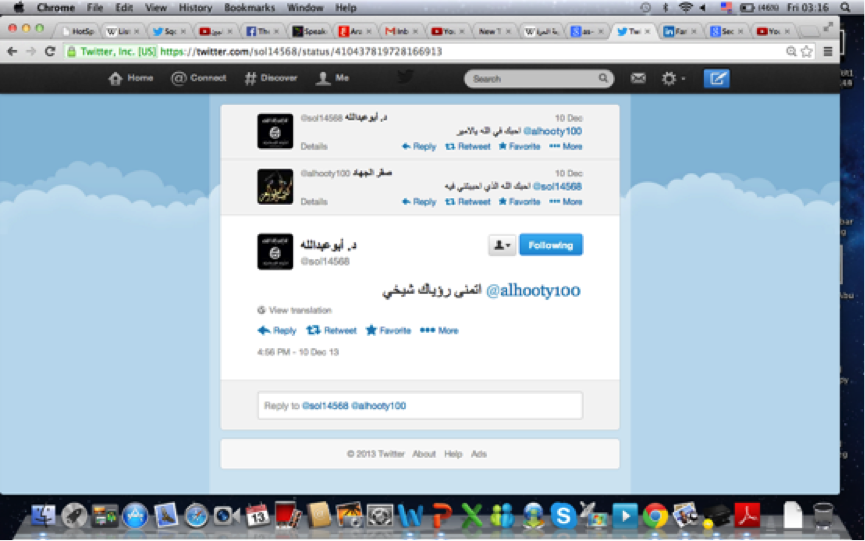
Figure 45: Exhange between Suqur al-Izz leader and ISIS member.
Active since February of this year, the main front on which Suqur al-Izz has operated is Latakia, where it coordinated with both ISIS and Jabhat al-Nusra during the summer offensive on Alawite areas. In common with ISIS, Jabhat al-Nusra and other jihadi groups, Suqur al-Izz attempts to show outreach to the local population.
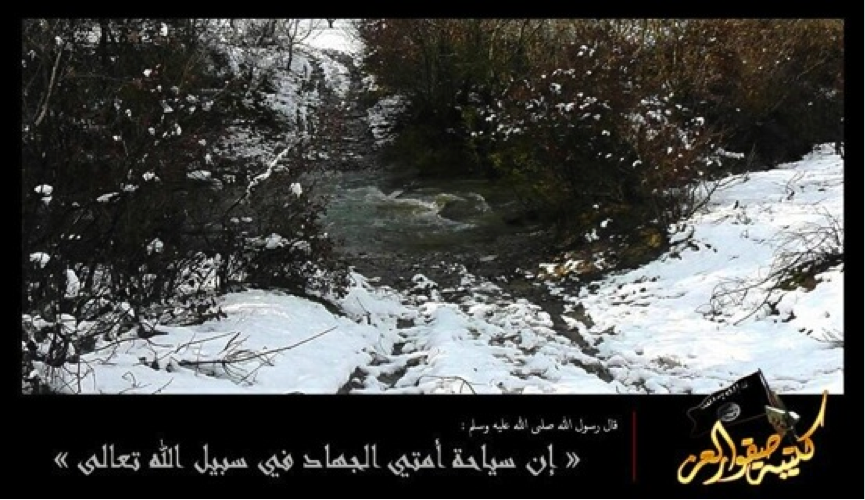
Figure 46: Suqur al-Izz photo of Latakia countryside covered in snow. Image released in March.
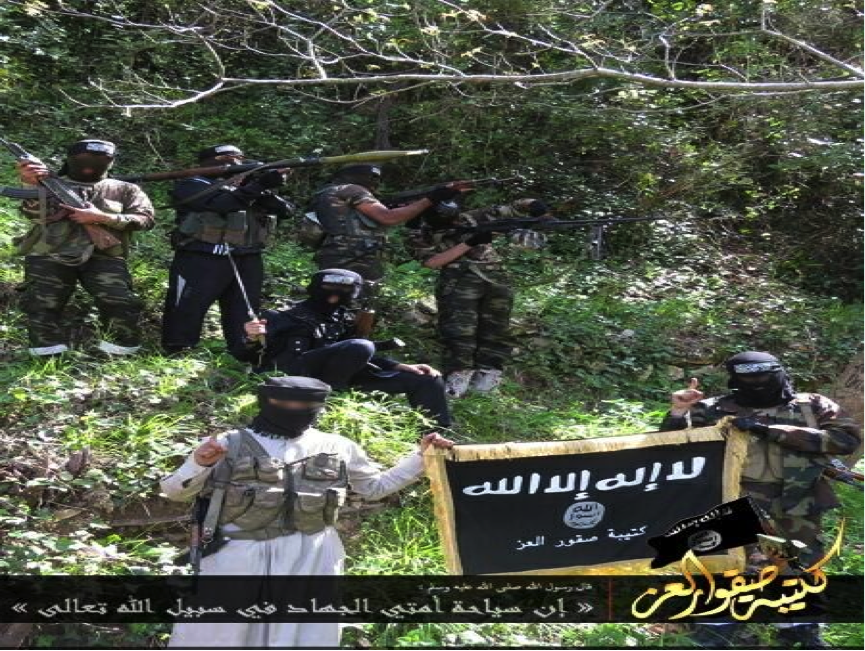
Figure 47: Suqur al-Izz fighters pose in the Latakia countryside.
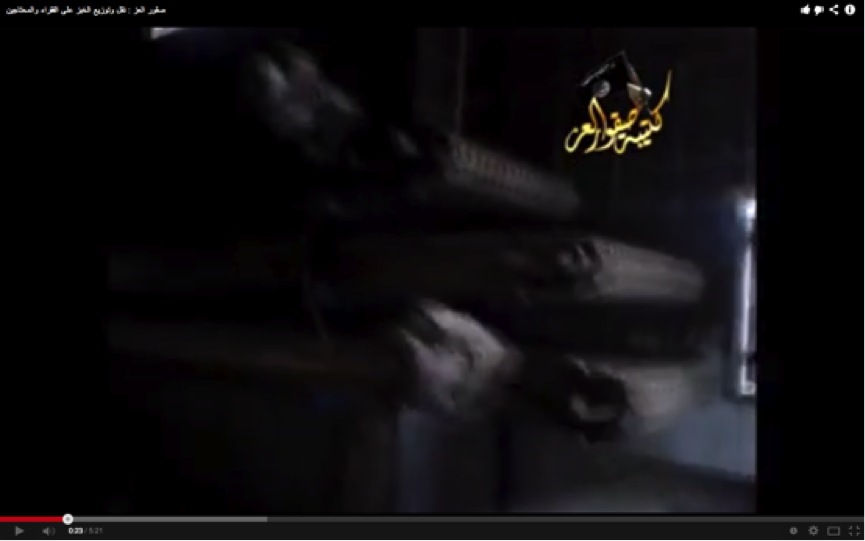
Figure 48: Inside a Suqur al-Izz-run bakery in March of this year, as part of a program of distribution of bread to the poor of rural Latakia.
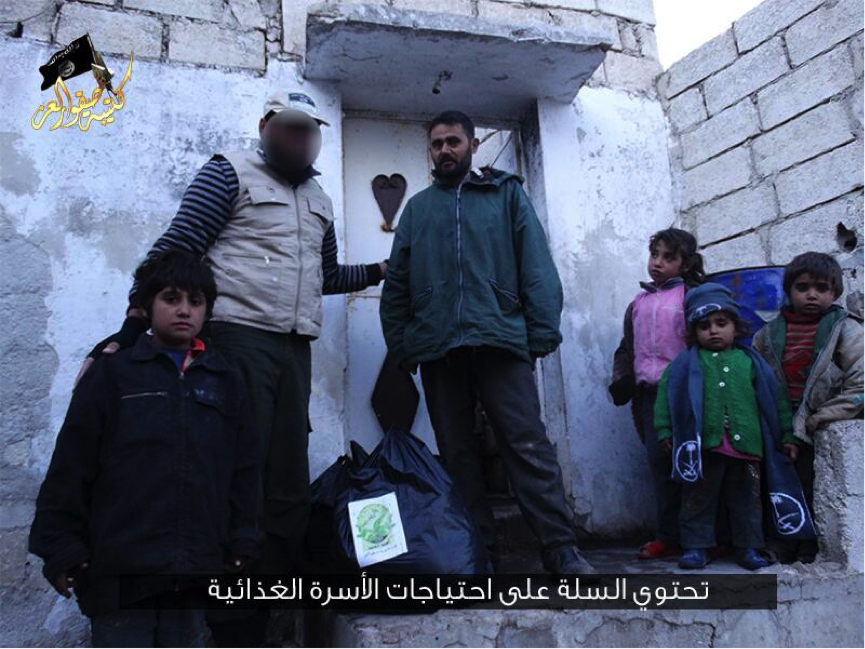
Figure 49: Suqur al-Izz providing a local family with provisions for this winter.
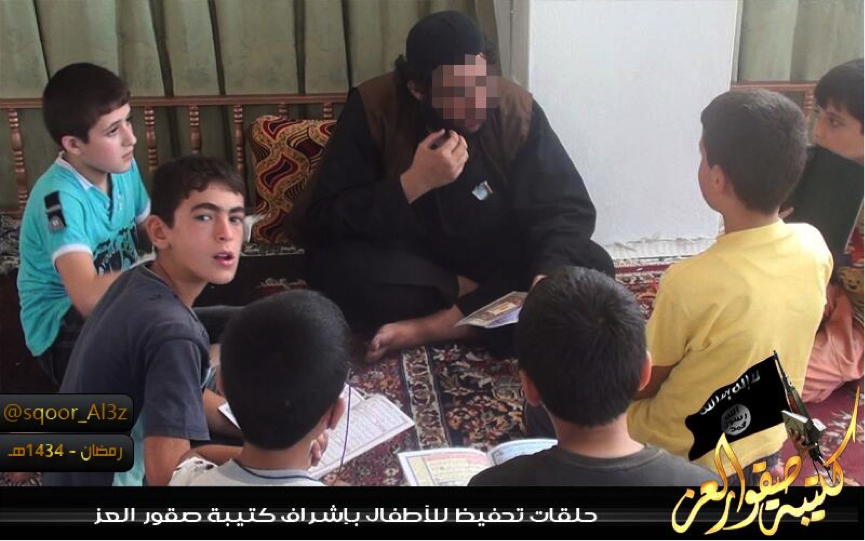
Figure 50: Suqur al-Izz, like JMWA, provides children with Qur’an recitation classes.
The group has claimed some martyrs, primarily of Arabian Peninsula origin but also with an Indonesian and native Syrian component. Many of these martyrs were claimed during operations in Aleppo governorate towards the end of November.

Figure 51: Ismail al-Mohsen.
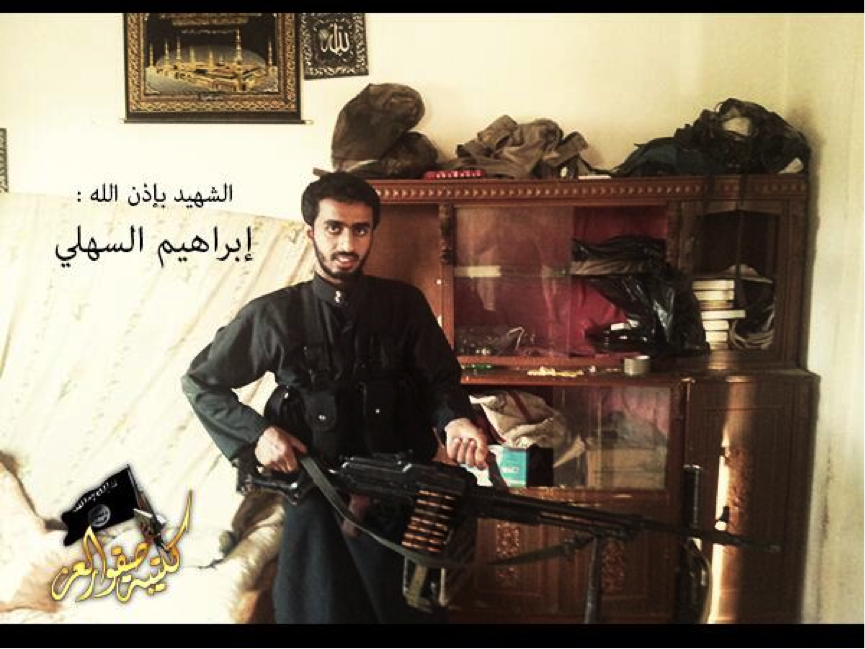
Figure 52: Ibrahim al-Sahli
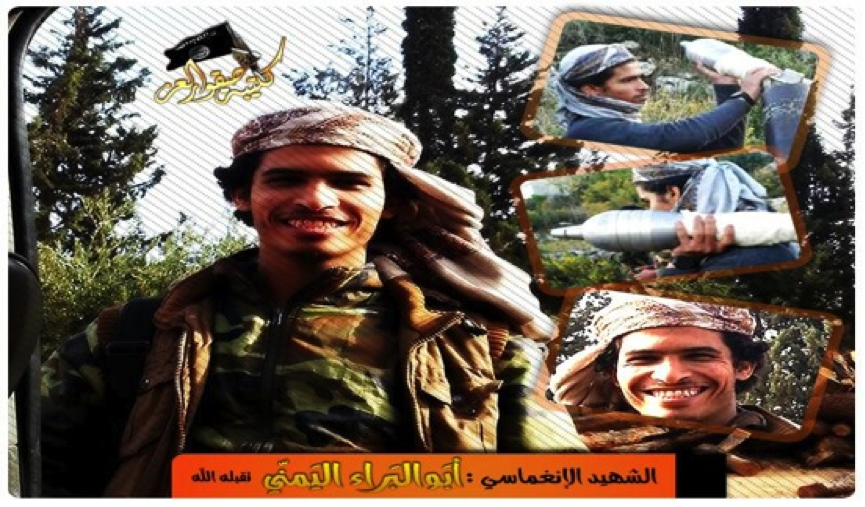
Figure 53: Abu al-Bara al-Yemeni, a Yemeni martyr for Suqur al-Izz.

Figure 54: Abu Mohammed the Indonesian.

Figure 55: Ayad al-Shahrani, a Saudi martyr for Suqur al-Izz.
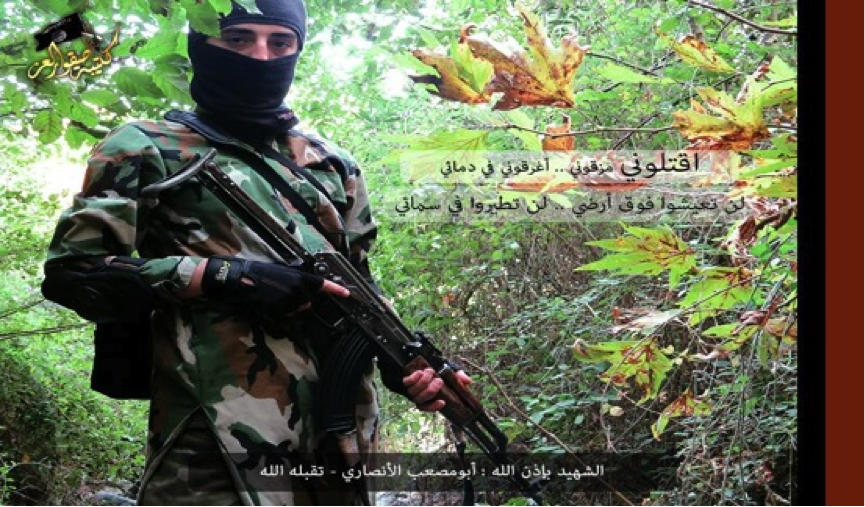
Figure 56: Abu Mus’ab al-Ansari, a Syrian martyr for Suqur al-Izz.
Lions of the Caliphate Battalion
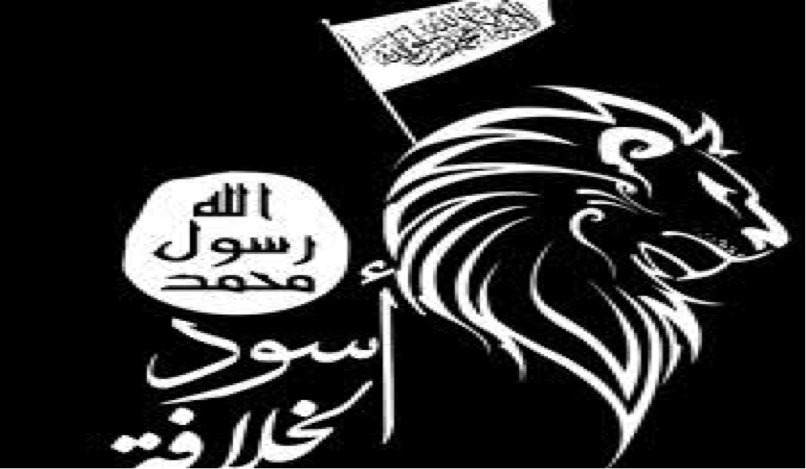
Figure 57: Logo of the Lions of the Caliphate.
Based in Latakia and founded and led by an Egyptian (Abu Muadh al-Masri), this group of muhajireen has since become a front-group for ISIS after its leader confirmed bay’ah to ISIS in mid-November.
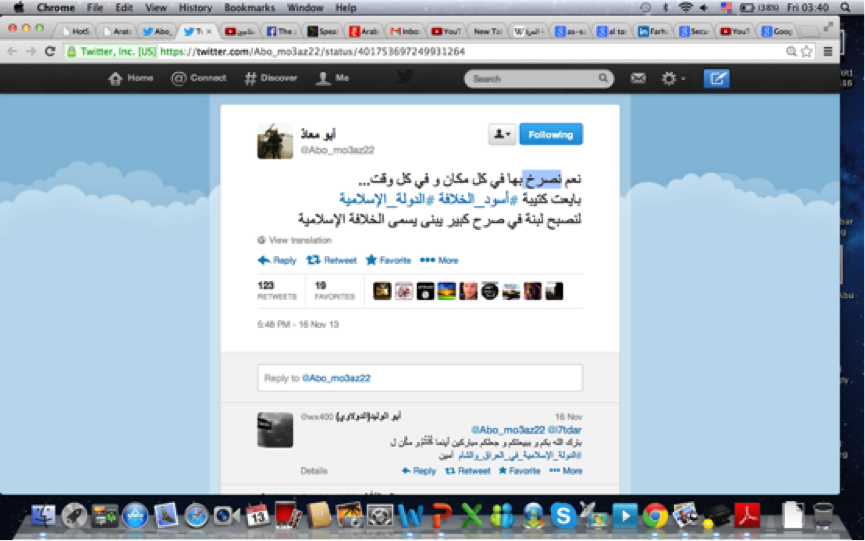
Figure 58: Tweet from Abu Muadh al-Masri confirming Lions of the Caliphate’s pledge of allegiance to ISIS.
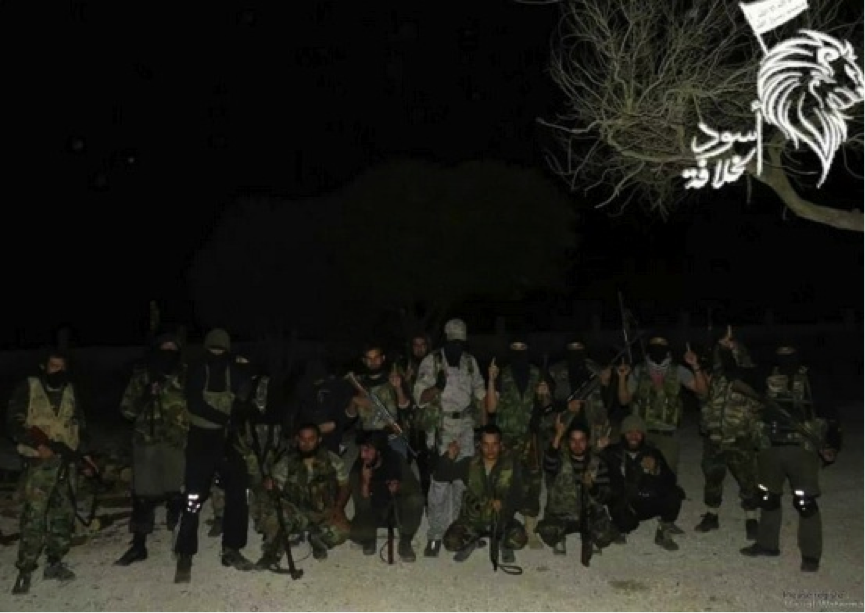
Figure 59: Lions of the Caliphate fighters in rural Latakia. Photo from late October after an evening of training.

Figure 60: Lions of the Caliphate fighters train on an October evening.

Figure 61: Lions of the Caliphate fighters pose with the finger of tawheed in their Latakia training camp.
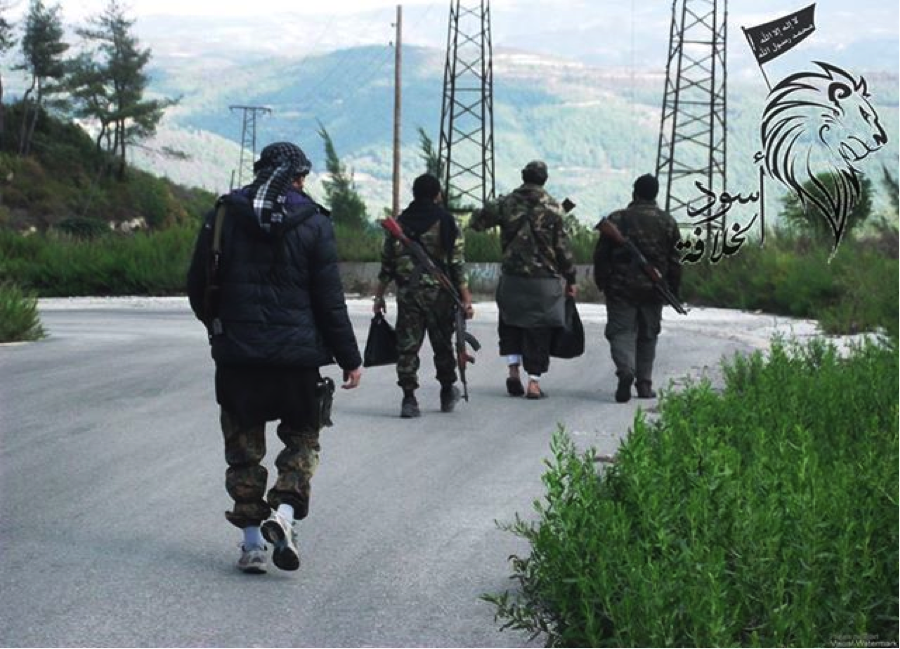
Figure 62: Lions of the Caliphate mujahideen in rural Latakia.
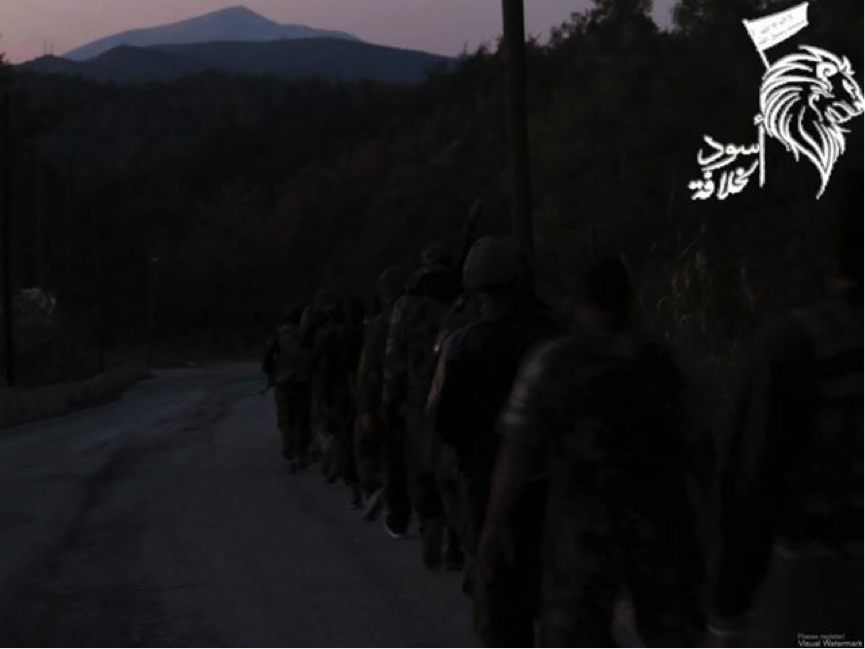
Figure 63: Lions of the Caliphate evening march through Latakia countryside.

Figure 64: Another scene from the evening march.
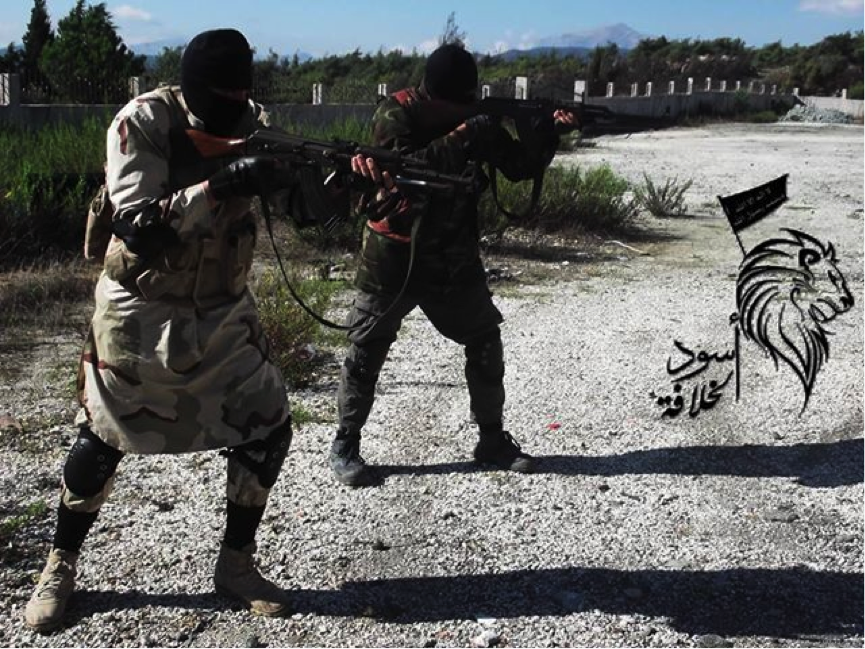
Figure 65: Another photo from inside the Lions of the Caliphate’s training camp.

Figure 66: Abu Muadh al-Masri, the Egyptian leader of the Lions of the Caliphate.
Jund Allah Brigade in Bilad ash-Sham
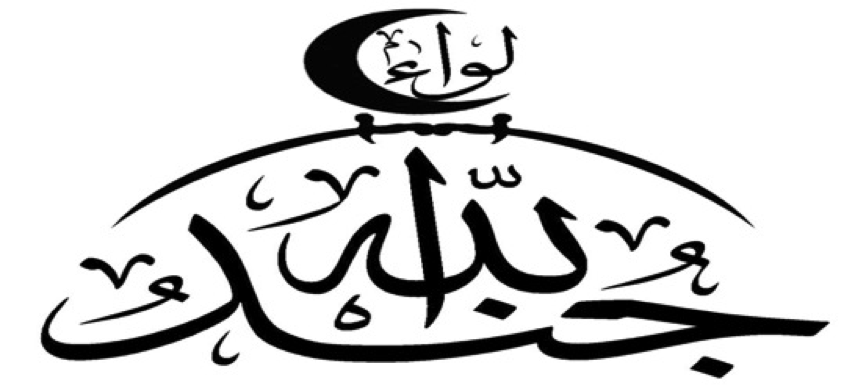
Figure 67: Logo of Jund Allah Brigade in Bilad ash-Sham
While not a battalion founded and led by muhajireen, this group, which operates in Idlib and Hama governorates, does have its own battalion component for muhajireen, which recently claimed a martyr.
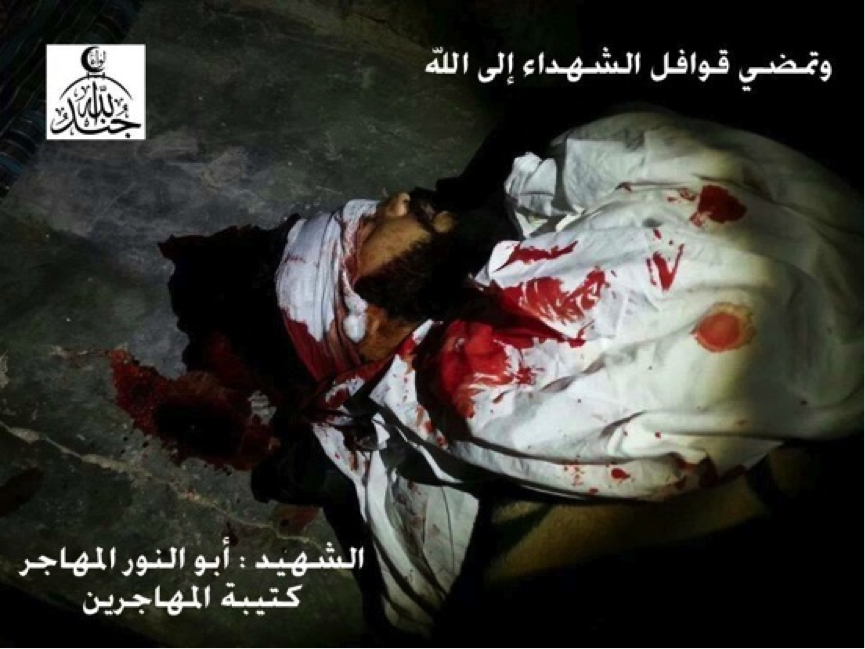
Figure 68: Abu al-Nur al-Muhajir, whose martyrdom for the Muhajireen Battalion of the Jund Allah Brigade in Bilad ash-Sham was announced in mid-November. He died fighting in Wadi al-Deif of Ma’arat an-Na’aman area of Idlib governorate.
Conclusion
It can be seen that the muhajireen battalions are by no means monolithic. While they generally share a common ideology of global jihad and the necessity of Khilafa, personal politics (most notably in the case of the split in JMWA) prevent a strictly united front. On the other hand, Jund ash-Sham’s inclinations show however that independence or affiliation one way or another need not imply hostility to other jihadi groupings. Indeed, it would seem that there is at least a desire to prevent open fitna between groupings, as Harakat Sham al-Islam tried to emphasize unity and the sanctity of Muslim blood in the face of conflict between ISIS and a rival battalion in Latakia (Katiba Hijra Ila Allah). I deem it unlikely that there will be internecine strife between any of these muhajireen groups and ISIS/Jabhat al-Nusra.
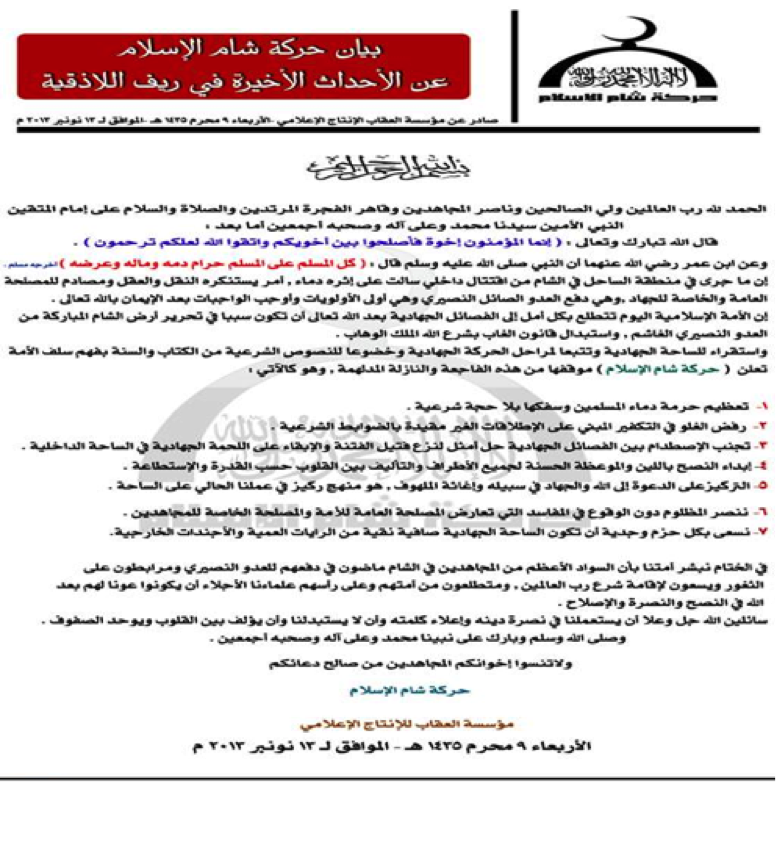
Figure 69: Harakat Sham al-Islam statement in mid-November on infighting in Latakia.
Aymenn Jawad Al-Tamimi is a Shillman-Ginsburg Fellow at the Middle East Forum and a student at Brasenose College, Oxford University. Follow on Twitter: @ajaltamimi
Musings of an Iraqi Brasenostril on Jihad: Muhajireen Battalions in Syria
Posted on

1 Reply to “Musings of an Iraqi Brasenostril on Jihad: Muhajireen Battalions in Syria”
Comments are closed.